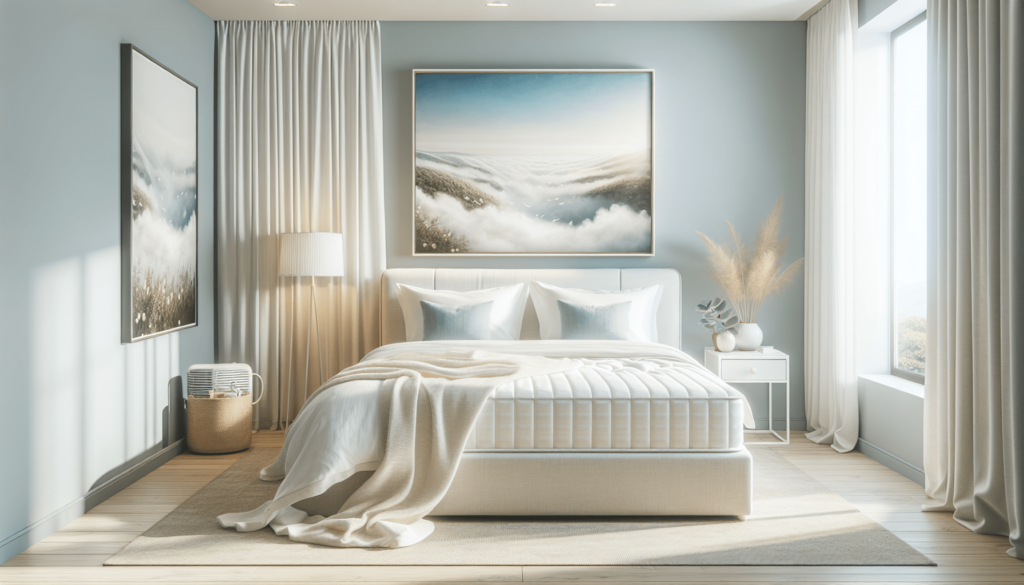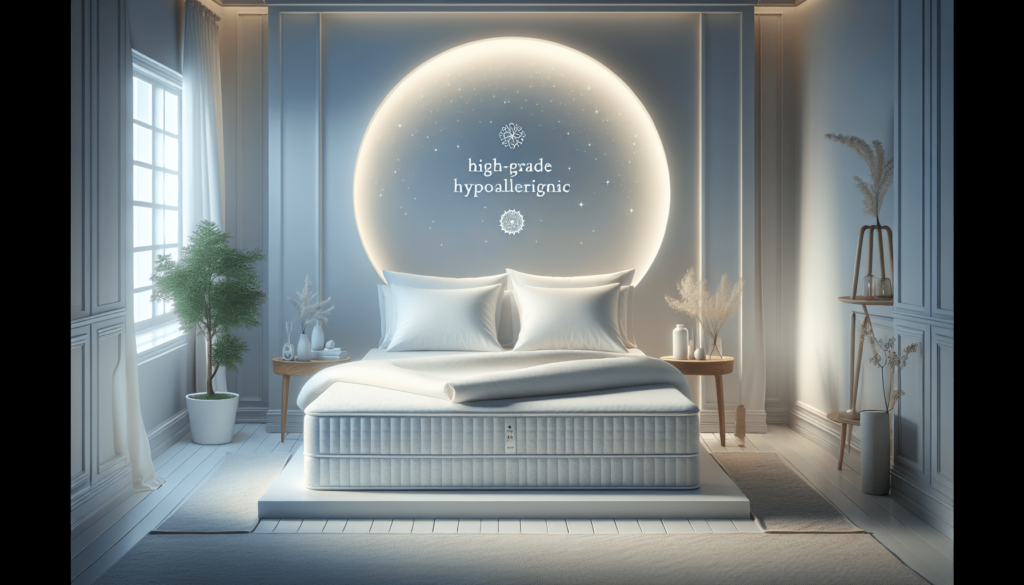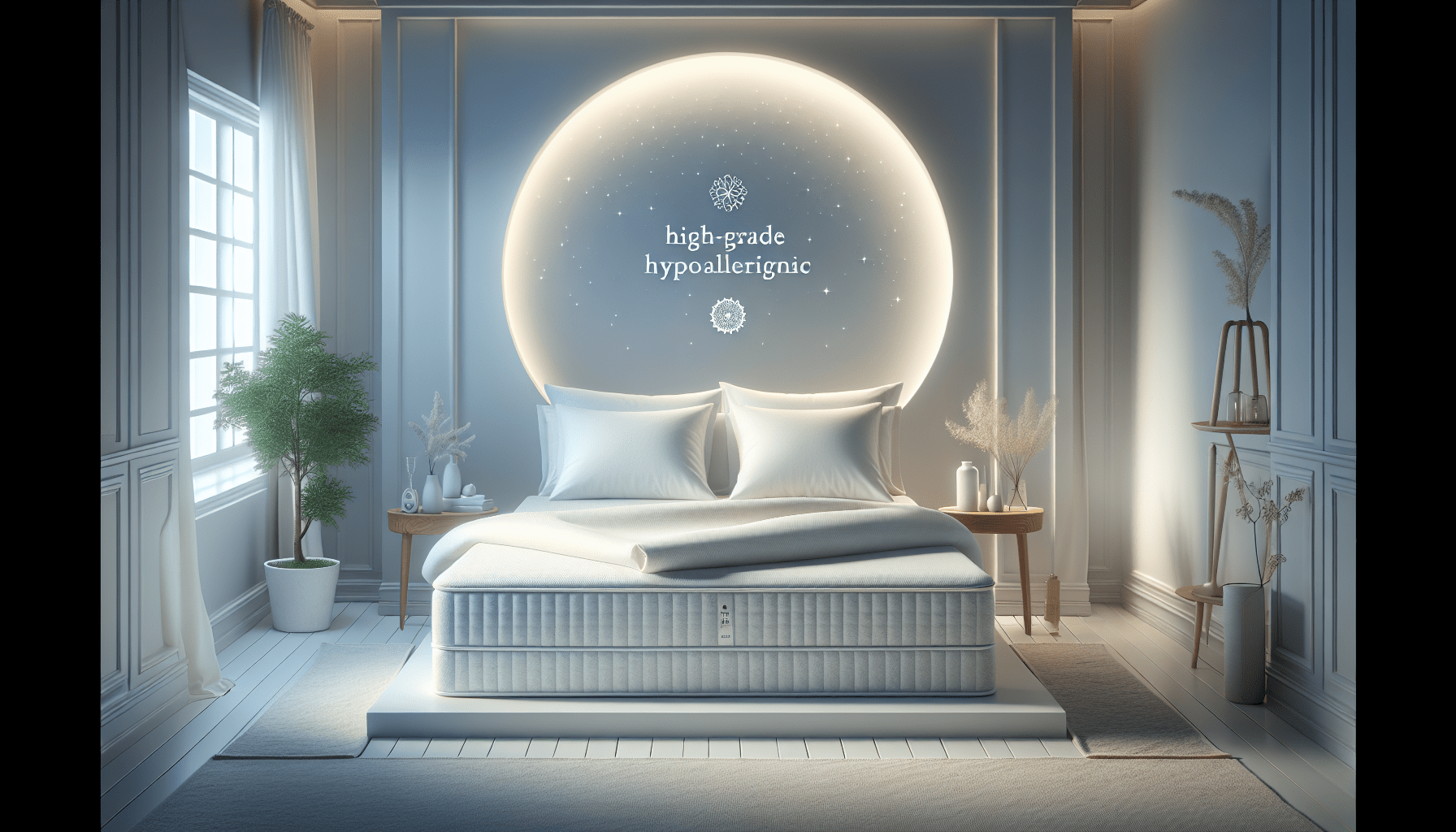Welcome to your guide on how to choose the right allergy-friendly mattress for seasonal allergy sufferers! In this article, you’ll discover practical steps to find a mattress that not only helps you sleep better but also keeps those pesky allergens at bay. From understanding the types of materials that prevent dust mites to selecting hypoallergenic covers, this guide has you covered so you can enjoy a restful and allergy-free night’s sleep. Have you ever woken up with a stuffy nose, itchy eyes, or a scratchy throat, especially during allergy season? If you’re a seasonal allergy sufferer, you know how disruptive these symptoms can be to a good night’s sleep. One key step to mitigating these symptoms could be as simple as upgrading your mattress. But how do you choose the right allergy-friendly mattress?
The Importance of an Allergy-Friendly Mattress
An allergy-friendly mattress can make a significant difference in your quality of sleep and overall well-being. Seasonal allergies are often triggered by allergens such as dust mites, pollen, pet dander, and mold, all of which can accumulate in your mattress over time. Choosing a mattress designed to repel or resist these allergens can alleviate your symptoms and help you get a better night’s rest.
Understanding Common Allergens and Their Impact
To choose the right mattress, it’s essential to understand the common allergens that may be affecting your sleep. Here’s a quick overview of the most prevalent allergens:
| Allergen | Characteristics | Impact on Sleep |
|---|---|---|
| Dust Mites | Microscopic insects that thrive in warm, humid environments | Can cause sneezing, itching, and other respiratory issues |
| Pollen | Tiny particles released by plants during certain times of the year | Can cause nasal congestion, runny nose, and itchy eyes |
| Pet Dander | Tiny, even microscopic, flecks of skin shed by cats, dogs, and other animals | Can trigger asthma, rhinitis, and other allergic reactions |
| Mold | Fungi that grow in moist, dark environments | Can cause coughing, wheezing, and nasal congestion |
Types of Mattresses to Consider
There are various types of mattresses available, but not all are equally effective at reducing allergen exposure. Here’s a breakdown of the most popular types of mattresses and their suitability for allergy sufferers:
Memory Foam Mattresses
Memory foam mattresses are made from viscoelastic material that conforms to your body shape. They are generally resistant to dust mites because the material is too dense for the mites to penetrate. However, memory foam can retain heat, which may encourage the growth of mold in humid environments.
Latex Mattresses
Latex mattresses, especially those made from natural latex, are highly resistant to dust mites, mold, and mildew. Natural latex is inherently antimicrobial and hypoallergenic, making it an excellent choice for allergy sufferers. Be aware that some people have latex allergies, so always check for your compatibility.
Innerspring Mattresses
Innerspring mattresses have coils or springs inside them, usually topped with a layer of padding. These mattresses often have more breathability, but they can also harbor dust mites and other allergens more easily due to the empty spaces within the coils. An added mattress cover designed to repel allergens can help mitigate this issue.
Hybrid Mattresses
Hybrid mattresses combine elements from different types of mattresses (e.g., memory foam and innerspring) to offer a balanced feel. Their suitability for allergy sufferers depends on the materials used. Look for hybrid mattresses that incorporate hypoallergenic materials and offer good airflow.

Mattress Features to Look For
When shopping for an allergy-friendly mattress, specific features can help reduce allergen exposure. Here are some key features to consider:
Hypoallergenic Materials
Choosing a mattress with hypoallergenic materials can significantly reduce your exposure to common allergens. Materials like natural latex, organic cotton, and organic wool are less likely to cause allergic reactions and are more resistant to dust mites and mold.
Anti-Dust Mite and Anti-Microbial Treatments
Some mattresses come with anti-dust mite and anti-microbial treatments that inhibit the growth and presence of allergens. Look for certifications from reputable organizations to ensure these treatments are effective and safe.
Breathability
A mattress with good breathability will allow for better air circulation, reducing the likelihood of mold and mildew growth. Materials like open-cell memory foam and breathable covers can enhance a mattress’s airflow.
Washable Covers
A mattress with a removable and washable cover can make a big difference in keeping allergens at bay. Regularly washing the cover at high temperatures can help eliminate dust mites, pollen, and other allergens.
Firmness
While firmness is often a matter of personal preference, it’s worth noting that firmer mattresses are less likely to harbor dust mites compared to softer ones. A firmer mattress provides a less hospitable environment for these tiny creatures.
Recommended Brands and Models
To make your search easier, here are some recommended brands and models that are known for their allergy-friendly features:
| Brand | Model | Key Features |
|---|---|---|
| Saatva | Saatva Latex Hybrid | Natural latex, organic cotton cover |
| Avocado | Avocado Green Mattress | Natural latex, wool, and organic cotton |
| Tuft & Needle | Original Mattress | Adaptive foam with cooling properties |
| Purple | Purple Mattress | Hyper-Elastic Polymer grid, breathable |
| Naturepedic | EOS Organic Mattress | Customizable layers, organic materials |

Caring for Your Allergy-Friendly Mattress
Once you’ve chosen the perfect allergy-friendly mattress, proper maintenance is essential to keep it performing well. Here are some tips for caring for your new mattress:
Regular Cleaning
Vacuum your mattress regularly to remove dust and debris. Use a vacuum with a HEPA filter to capture allergens effectively.
Wash Bedding Regularly
Wash your bedding, including mattress covers and pillowcases, at least once a week in hot water. This helps eliminate dust mites and other allergens.
Use a Mattress Protector
A high-quality, hypoallergenic mattress protector can provide an additional barrier against allergens. Make sure it’s breathable and washable.
Control Humidity
Keep your bedroom’s humidity levels low to prevent mold and mildew growth. A dehumidifier can be a helpful tool, especially in humid climates.
Rotate and Flip
Rotating and flipping your mattress (if applicable) can help it wear more evenly and reduce the likelihood of allergen buildup in specific areas.
Recognizing When It’s Time to Replace Your Mattress
Even the best mattresses have a finite lifespan. Over time, they can accumulate allergens that are difficult to eliminate entirely. Here are some signs that it might be time to replace your mattress:
Age of the Mattress
Most mattresses last between 7-10 years. If your mattress is older than that, it may not provide the same level of allergen protection.
Increased Allergies
If you’ve noticed an uptick in allergy symptoms, your mattress might be the culprit. Older mattresses can become more allergen-laden over time.
Sagging or Lumps
A mattress that sags or has lumps won’t provide proper support and can contribute to poor sleep quality and increased allergen exposure.
Additional Tips for Reducing Allergens in Your Bedroom
Choosing the right mattress is a crucial step, but there are other ways to create an allergy-friendly environment in your bedroom:
Clean Floors Regularly
Carpets can trap allergens. Vacuuming with a HEPA filter and using a steam cleaner can help manage this. Alternatively, consider replacing carpets with hard flooring.
Use Air Purifiers
An air purifier with a HEPA filter can capture airborne allergens like pollen, dust, and pet dander, improving your overall air quality.
Keep Pets Out
If you’re allergic to pet dander, it’s best to keep pets out of your bedroom. Create a designated sleeping area for your pets elsewhere in the house.
Wash Curtains and Blinds
Fabric curtains and blinds can harbor dust and allergens. Wash or clean them regularly, or opt for easy-to-clean alternatives like roller blinds.
Declutter
A clutter-free room is easier to clean and less likely to accumulate dust and allergens. Keep surfaces as clear as possible.
Consulting a Healthcare Professional
If you’re struggling with severe allergies despite taking these steps, it may be worthwhile to consult a healthcare professional. They can provide personalized advice and may recommend allergy testing to identify specific triggers. In some cases, allergy medications or treatments may be necessary.
Conclusion
Choosing the right allergy-friendly mattress can significantly improve your sleep quality and overall well-being, especially during allergy season. By understanding the common allergens, evaluating various mattress types, and paying attention to critical features, you can find a mattress that suits your needs and helps you breathe easier.
With proper care and additional steps to reduce allergens in your bedroom, you can create a haven of comfort and cleanliness. Here’s to restful nights and symptom-free mornings!
Remember, investing in a quality mattress is an investment in your health. Make your choice wisely, and you’ll reap the benefits for years to come. Sleep well!
